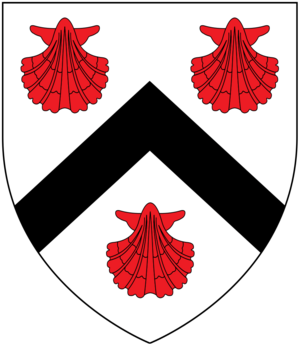Sir Hugh Pollard, 2nd Baronet facts for kids
Sir Hugh Pollard, 2nd Baronet (born in 1603, died on November 27, 1666) was an English soldier and a Member of Parliament (MP). He was chosen to represent different areas in the English Parliament. These areas included Bere Alston in 1640, Callington in 1660, and Devon in 1661. Sir Hugh was a strong supporter of the King during the English Civil War, joining the side known as the Royalists.
Contents
Early Life and Family
Hugh Pollard was the oldest son of Sir Lewis Pollard, 1st Baronet. His father was from a place called King's Nympton in Devonshire. Hugh's mother was Margaret Berkeley. She was the daughter of Sir Henry Berkeley, a knight from Bruton, Somerset.
Military and Political Career
Sir Hugh Pollard joined the army. By 1639, he was a captain. His job was to gather soldiers in Devon for wars against Scotland. The next year, he was sent to Scotland. He was likely at a battle called the Battle of Newburn.
The English Civil War
In November 1640, Sir Hugh Pollard became an MP for Bere Alston. This was for a special Parliament known as the Long Parliament. He became involved in some plans by the Royalist army in 1641. He was found to have made a serious mistake and was removed from Parliament. That same year, he became the 2nd Baronet after his father passed away.
During the English Civil War, Sir Hugh mostly served in the King's army. He fought in Devonshire and Cornwall. In 1645, he was made the governor of Dartmouth. However, Parliament's soldiers, led by Fairfax, surrounded Dartmouth in January 1646. Sir Hugh was captured and held as a prisoner until later that year.
In 1653, he had to pay a large fine of £518. This was because he had supported the King. This big fine might have made him sell his family home. He sold the manor of King's Nympton to his cousin, Sir Arthur Northcote, 2nd Baronet. This estate had been bought by his ancestor, Sir Lewis Pollard, a judge and MP.
After the Monarchy Returned
After the King returned to power in 1660, a time known as the Restoration, Sir Hugh Pollard was again elected as an MP. He represented Callington in Cornwall. This was likely because of his second wife, Mary Stevens. Her family, the Rolles, had a lot of influence in that area.
Sir Hugh was given many important roles. He became a Justice of the Peace (JP) and a Deputy Lieutenant. He also became the Vice Admiral of Devon. In 1661, he was elected as an MP for Devon. He served alongside Sir John Rolle. In 1661, he was made the Governor of Guernsey. The next year, he became the Comptroller of the Royal Household and a Privy Councillor. This meant he advised the King.
Family Life
Sir Hugh Pollard was married two times.
- His first wife was Lady Bridget de Vere. She was the daughter of Edward de Vere, 17th Earl of Oxford. Lady Bridget had one daughter with Sir Hugh, named Bridget Pollard.
- His second wife was Mary Stevens. She was from Great Torrington. Mary was the widow of Henry Rolle, who owned a large estate called Stevenstone. Mary's family, the Stevens, were also very influential. Her family's connections likely helped Sir Hugh become an MP for Callington. Mary Stevens was buried at St Giles in the Wood, which was the church for the Stevenstone estate.
Death and Legacy
Sir Hugh Pollard passed away on November 27, 1666. He was about 63 years old. He died at Whitehall in London. He was buried in the famous Westminster Abbey.
Since Sir Hugh did not have any sons, his title of Baronet passed to his younger brother. This was Sir Amyas Pollard, 3rd Baronet (1616-1701). Sir Hugh had spent a lot of money, especially on entertaining for government business. Because of these debts, his brother Amyas inherited very little of the family's old estate. Amyas soon had to sell the family manor of King's Nympton. When Sir Amyas died without any children, the Baronet title ended.


